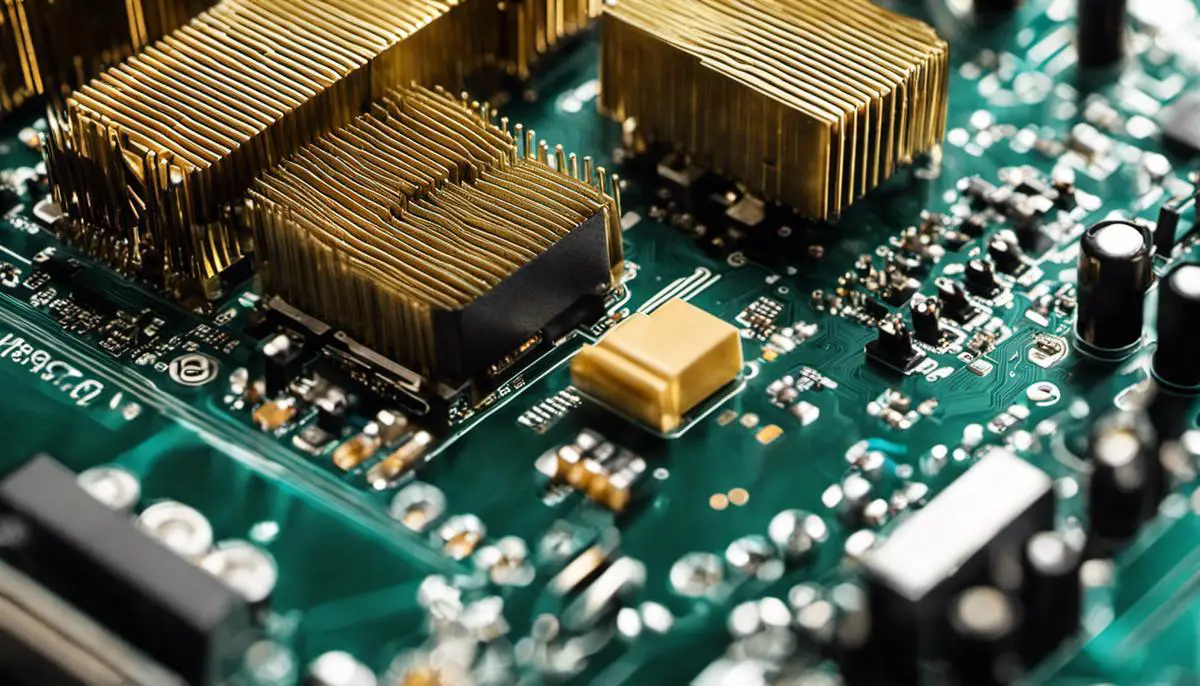In the rapidly advancing frontier of artificial intelligence, the profound influence and versatility of the Generative Pretrained Transformer (GPT), is beyond contestation. From humble origins to being a pacesetter in the AI community, its unrivaled capacity in understanding and generating human-like text has ostensibly transformed the manner in which humans interact with machines. This extensive exploration unpacks the historical evolution of GPT, the fundamental principles that underpin its operation, and dives into the intricacies of its architecture. Additionally, we highlight its impressive array of applications in a myriad of domains, ranging from language translation to document summarization, while also laying bare a comprehensive analysis of its strengths and limitations. Enabled by a vision of the future trajectory of GPT, this discourse intends to bridge the understanding of the current state of GPT and its substantial potential for further advancements.
Background and Evolution of GPT
Evolution and Driving Forces behind the Inception of Generative Pre-training Transformer (GPT)
The world is witnessing the rapid evolution of Artificial Intelligence (AI) technologies, with an emphasis on natural language processing (NLP) advancements. Among these developments, Generative Pretraining Transformer (GPT) models have emerged as a groundbreaking milestone in processing human language. This contribution aims to explore the evolution dynamics and the primary motivational forces that brought about the inception of GPT.
The origins of GPT can be traced back to the Transformer model, first introduced in the seminal work “Attention is All You Need” by Vaswani et al. 2017. The Transformer model provided a new and effective way to handle sequences, shifting focus from earlier recurrent models to attention mechanisms. The attention method allowed the model to focus on different elements within a series based on their relevance to the task, thus improving accuracy when dealing with long sequences—a critical requirement in language processing.
GPT, a subset of this model, was conceptualized as an effort to foster unsupervised learning. OpenAI presented the GPT model in 2018 as a natural language processing AI model. The paper titled, “Improving Language Understanding by Generative Pre-Training,” argues that it is possible for machines to generate human-like text with only a user prompt to guide it. By drawing from nearly 40GB of internet text, the GPT model could write its own creative fictions, replicate human-like styles, and even respond accurately to secret prompts. However, the power of GPT was not fully realized until the advent of GPT-2.
Introduced in 2019, GPT-2 offered substantially greater power and capacity than its predecessor. Improved training methodologies and an expansive dataset of about 1.5 billion parameters made the model more potent, capable of generating remarkably coherent and diverse paragraphs of text. Interestingly, GPT-2 sparked ethical concerns concerning its impressive capabilities, leading to a decision by OpenAI to initially refrain from fully open-source publishing, fearing misuse by malicious entities.
Subsequently, in 2020, GPT-3, built upon 175 billion machine learning parameters, demonstrated the next level of high-quality text generation, translation tasks, and even basic question-answering capabilities. It broke boundaries with its real-world applications and prompted renewed discussions about the ethical implications of this rapidly advancing technology.
Considered the poster child for the Transformer model, GPT models are an embodiment of the search for science and technology that can understand, generate, and interact with human language – the foundational element of human-to-human communication. Such models are at the core of the AI dream – machines that not only process language mechanically but comprehend the nuances of human communication.
The growth trajectory of GPT remains a testament to evolutionary dynamics in AI and the collective pursuit of developing machines capable of understanding, replicating, and eventually independently ideating human language. The inception and progression of the GPT models have undoubtedly been driven by the quest to reduce the gap between machines and humans’ linguistic capabilities, moving us one step closer to an era of seamless human-machine interaction. This ongoing journey continues to disrupt the paradigms of AI, deepening our comprehension of language and communication and pushing the boundaries of what it means to interact in a digital age.

GPT: Fundamental Principles

Architecture and working of GPT
The Generative Pretraining Transformer (GPT) stands atop the hierarchy of artificial intelligence innovations, representing unrivaled breakthroughs in natural language processing (NLP). One cannot sufficiently explore this pivotal technology without delving into its underlying architecture. This article is dedicated to shedding light on the architectural configuration of GPT and how it functions.
GPT, in its essence, is a transformer-based model that constitutes multiple stacked transformer block layers. Each of these has its own set of attention heads and feed-forward neural networks. They work synchronously to facilitate the storage and manipulation of information.
The structural design of GPT models differs significantly from the conventional transformer setup due to its reliance on the ‘decoding’ part of the transformer model. The reason behind this design choice can be traced back to its language prediction objectives. The structure of GPT models effects the transformer’s capacity for auto-regressive linguistic prediction, where a sequence of preceding words is used to predict the next word.
A pivotal characteristic of GPT’s architecture is the self-attention mechanism, seen in other transformer models but harnessed in an innovative way in GPT models. This essentially means each word in a sentence is subjected to attention computations, facilitating the context-adjustive influence of the meaning of each word over the others.
Another feature, quintessential to the GPT modeling system, is the use of mask-based training; an elegant strategy to unpick the task of predicting future tokens based only on past ones. This finesse impedes the model from glimpsing future input words during training thereby sincerely emulating the real task of prediction.
GPT models deviate from other transformer-based models, like BERT, in their refusal to operate bi-directionally. Instead, they follow a left-to-right processing format, optimizing the architecture for prediction tasks.
In the context of the data used for training GPT models, there exists an undeniable allegiance to both quality and quantity. The enormity of the datasets used to train GPT models explicates the impressive language generation and understanding capabilities these models have.
One cannot underestimate the role of transfer learning in these models. The idea is for the models to construct a universal language model from an extensive corpus of text and adjust, or fine-tune, to specific tasks as needed. This makes GPT extendable to a multitude of NLP tasks without needing extensive task-specific infrastructure.
These architectural specifics of GPT models, embedded within their neural network design, culminate into an impressive model whose functions reach across a wide variety of natural language processing tasks. From translation to question-answering and text generation, they hold immense potential yet to be fully realized, and yet, they have already revolutionized our understanding and utilization of language processing capabilities in artificial intelligence.

Applications of GPT
Shifting Focus to GPT Applications: Real-World Impact Across Diverse Domains
With an understanding of the intricate underpinnings of Generative Pretraining Transformers, or GPT models, it is prudent to school our focus toward the far-reaching applications of this groundbreaking technology. The impact of GPT models spans various scientific and academic circles, unlocking the astounding potential of AI across disparate sectors.
In the realm of machine translation, GPT holds considerable promise in transforming how we perceive language barriers. These models demonstrate a remarkable proclivity for understanding and generating human language, which can expedite seamless translation across disparate languages. This transcends conventional practices by toeing the line between syntactic translation and semantic understanding, ensuring more accurate, contextual translation.
In Search Engine Optimization (SEO) and search query interpretation, GPT finds application through its potent combination of understanding intent and predicting user behavior. It harnesses its natural language processing capacity to provide more intuitive, accurate matches for search queries, focusing centrally on enhancing user experience.
GPT models have also established a solid foothold in the sphere of content creation. From enhancing text recommendations to generating concise, human-like text, the applicability of GPT models is remarkably flexible. Such a capability can significantly streamline content marketing strategies and automate generation of easily comprehensible, audience-targeted content.
Another intriguing application pertains to chatbots and virtual assistants. Taking user interaction to the next level, GPT models have played a significant role in powering these systems. They facilitate sophisticated conversation abilities, thanks to their understanding of context and ability to generate well-structured, natural responses.
In the medical field, GPT models have extended their reach, enabling high-level analysis of patient records and medical literature. This could resultantly shape a more informed diagnosis process, formulating treatment plans and effectively mitigating health risks.
However, leveraging GPT’s advantages is not without challenges. Like any advanced technology, it is bound by limitations including generating text that can appear coherent but lacks veracity, increasing risks of misinformation. Additionally, like human language, it absorbs biases in data it is trained on, which can materialize through unsought consequences.
All in all, while the real-world applicability and advantages of GPT models are irrefutable, it is of paramount importance to address potential risks and challenges in stride. Only then can the true potential of GPT in augmenting human cognitive capabilities be fully harnessed, permitting a future where human and artificial cognitive abilities coalesce in powerful synergy.

Critical Analysis of GPT
Indeed, GPT models have invigorated the field of AI, NLP, and many other sectors, yet it would be an oversimplification to state that they are without pitfalls or limitations. This piece will selectively examine both the strengths and weaknesses of GPT models in their current form, providing a balanced perspective of these transformative AI systems.
A notable strength of GPT models lies in their uncanny ability to generate human-like text, producing coherent and contextually applicable sentences. This prowess extends beyond the mere rehashing of previously seen input but entails the model’s capacity to make semantically consistent predictions for unseen data. Compelling instances of this are visible in the production of prose, poetry, and even technical articles, offering enormous potential in areas like content creation and increasingly sophisticated chatbots.
Yet, another strong suit of GPT is its capacity to function well across various tasks with minimal task-specific tuning – a blessing from the lens of transfer learning. This means that a GPT model trained on one task can deliver reasonable performance on others, even if the tasks are unrelated. Such flexibility offers invaluable advantages in various applications, such as machine translation and SEO, where a single model can be leveraged across multiple tasks.
A third essential strength of GPT lies within its adaptability. It inherently adjusts to changes in language usage over time, through continuous interactions with new data. Such adaptability positions GPT models as a crucial tool in fields with evolving language, such as social media platforms and online forums.
Despite these acclaimed virtues, it would be scientifically flawed to examine GPT models without exploring their limitations. One significant drawback is their propensity to generate inaccurate or nonsensical outputs. Albeit producing grammatically correct sentences, GPT models – due to their reliance on statistical patterns rather than semantic understanding – are often vulnerable to fabricating facts or producing contextually inappropriate responses.
Another concern arises from their data dependence; a GPT model is as good as the data it has trained on. With biases inevitably present in any human-generated corpus, GPT models often reproduce these biases in their outputs, raising valid ethical considerations. Furthermore, these models require vast quantities of diverse data, setting a high entry bar for those seeking to train such models from scratch.
The so-called ‘black box’ issue is another obstacle in GPT models. Despite their impressive outputs, the inner workings of these models, particularly how they weigh different types of data and make decisions, remain opaque. This might impede our ability to predict or control their behavior fully, posing potential risks particularly in high-stake applications like medical analysis or autonomous vehicles.
Finally, resource consumption is not to be underestimated. Training GPT models command an immense amount of computational power, contributing to significant financial costs and environmental impacts.
In summary, the essential strengths of GPT models, including their human-like text generation, transfer learning capabilities, and adaptability, are counterbalanced by limitations: accuracy of outputs, bias replication, opacity of internal mechanisms, and significant resource consumption. These considerations provide a comprehensive perspective necessary in discussions about the current and future applications of such influential AI models.

Future of GPT
To ponder the future prospects of Generative Pretraining Transformer (GPT) in revolutionizing varied sectors, it’s crucial to understand their potential and limitations already identified. Beyond academic and scientific research community, many industries are attracted to the prospects of incorporating such advanced language understanding and generation in their operations. A promising application ground can be seen in education, where GPT models can be potentially utilized as effective virtual tutors. With their inherent ability to generate human-like text, comprehend complex patterns, and adapt to changes in language usage over time, these models can aid in personalized learning experiences. They can offer detailed explanations, present multiple perspectives, and create a more interactive and engaging learning environment. In legal sectors, GPT models can optimize legal research and document analysis. By leveraging immense amounts of legal data, these models can alleviate the mundane tasks of legal professionals, providing a summarized understanding of intricate legal language. However, the inherent uncertainties in legal outcomes and the intricacy of the legal language can be a formidable challenge to the modeling. The application of GPT models in mental health is another arena with enormous potential. They can be developed as conversational agents to support psychosocial interventions, helping identify patient sentiment, stress-levels and provide tailored responses. Yet, one must be cautious as the models’ current propensity to generate inaccurate or nonsensical outputs can have serious repercussions in this context. Customer service is a sector where GPT has already been making strides. With a new wave of advanced chatbots and virtual assistants, these models, with their ability to comprehend and interpret words in surrounding contexts, can significantly enhance interactions. However, implementing this technology requires decisions about how to handle the potential replication of biases present in the training data. Scientific research can immensely benefit from GPT abilities. Automatizing literature review, hypothesis generation, and experiment design could accelerate the pace of discovery. However, the lack of transparency and understanding of GPT inner workings could pose problems where verification and reproducibility are essential. Also worth mentioning is the potential role of GPT in climate science. The models are capable to cope with the amount and complexity of data involved, predict climatological patterns or deviations, and help improve environmental impact forecasting. But this promising utility is counterbalanced by their own significant resource consumption in terms of computational power and environmental impact. In conclusion, while GPT holds extraordinary promise and potential to revolutionize various sectors, its limitations indeed warrant a conscientious approach. Continued research, improvements, ethical considerations, and regulatory measures are essential to realize the full potential of this fascinating AI technology, while ensuring societal benefit and averting adverse outcomes. Melding machine intelligence with human insight, the transformative power of GPT models offers an inviting, yet challenging path forward in the landscape of AI.
As we navigate through the promising milestones and innovations enabled by GPT, there is an undeniable consensus on its pivotal role in shaping the direction of artificial intelligence and deep learning. The transformer-based model has superseded its predecessors with its unique design and capabilities, fostering advancements across numerous applications, industries, and aspects of everyday life. Despite its evident strengths, there are also limitations, as is common with any technological model. The continuous identification of these limitations exhibits areas for necessary improvement and expansion, a vital component in propelling GPT towards future advancements. As we continue to push the bounds of what is feasible with GPT and AI in general, the anticipation of what is imminent in its evolution is undeniably self-evident.
